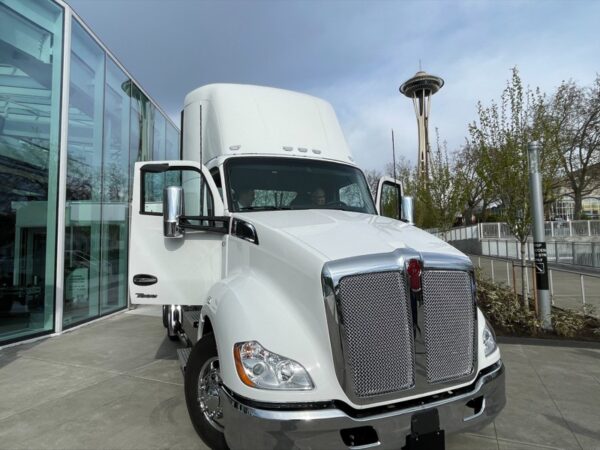FOR IMMEDIATE RELEASE
May 24, 2022
SEATTLE, WA–Today, Puget Soundkeeper and Washington Environmental Council released the third edition of Nature’s Scorecard, a report that provides the only publicly available, comprehensive database of Structural Stormwater Controls, or stormwater retrofits, implemented by municipalities.
Structural Stormwater Controls include stormwater retrofit projects that treat and control stormwater pollution from areas developed without stormwater controls, as well as other types of stormwater projects. The Nature’s Scorecard: Local Stormwater Pollution Controls Report illustrates that we must do more to reduce toxic stormwater pollution. Downstream communities and the Puget Sound ecosystem suffer the consequences of uncontrolled, toxic stormwater.
“Our Report shows that there are at least seven Phase II cities and counties that meet the Phase I population thresholds, and that are actually doing Structural Stormwater Control projects, but that have no regulatory requirements to do so,” said Alyssa Barton, Policy Manager at Puget Soundkeeper. “We need to raise the bar for all municipalities, to implement more widespread and strategic stormwater retrofit projects or else orcas, salmon, treaties, traditional cultures and our very way of life in the Puget Sound are gone.”
Stormwater is the primary source of toxic pollution to the rivers and lakes in the Puget Sound region. Neighborhoods with impervious surfaces and intense traffic patterns produce the largest amounts of polluted runoff. Rain sweeps chemicals and microplastics from hard surfaces directly and indirectly into the Puget Sound, where toxics accumulate in fish and shellfish, threatening the health of people and animals that consume them. The current municipal stormwater permit issued by the Washington Department of Ecology requires certain regional municipalities to address ongoing harm and control stormwater by modernizing treatment, implementing green infrastructure, and retrofitting existing development.
The municipal stormwater permit allows flexibility to meet various requirements, including projects that acquire land, remove homes in floodplains, and revegetate areas disturbed by other projects.
“While we find these types of projects valuable for many reasons, some cities and counties more heavily relied on these types of projects and neglected to retrofit existing development,” said Mindy Roberts, Puget Sound Program Director for Washington Environmental Council. “We can’t simply focus on not getting worse. We need to address built areas now because stormwater pollution, particularly from high-use transportation corridors, harms water and erodes resources throughout the region.”
Recent research pinpointing a car tire chemical (also called 6PPD-quinone) adds urgency for a regional retrofit effort. The chemical, which washes off impervious surfaces in stormwater, is deadly to coho salmon (as well as rainbow and brook trout). It causes Urban Runoff Mortality Syndrome, in which coho die before they can spawn in urban streams. Puget Soundkeeper has tracked URMS for decades and consistently finds between 60–100% of spawning coho die of URMS in urban streams, as compared with approximately 1% in nonurban streams. Most stormwater flows untreated into urban creeks and streams, which is why the permit requires certain cities and counties to retrofit developed areas. At the current rate municipalities are retrofitting the built environment, our salmon and orcas could be extinct before they finish.
The current permit does not require adequate reporting to determine if municipal investments in stormwater controls actually improve water quality. As a result, the 2022 edition of Nature’s Scorecard could not adequately grade municipalities on how well they have done because there is no data as to whether conditions are improving.
While the current Scorecard is a retroactive analysis, Puget Soundkeeper and Washington Environmental Council are already thinking ahead to the next set of permit requirements, which will be released in 2024.
Alyssa Barton shared that “the next permit needs to focus stormwater retrofit investments in our most vulnerable communities, and specifically reduce pollution in the built environment. Now is the time to address ecosystem harm such as coho urban runoff mortality syndrome.”
Stormwater pollution impacts communities throughout the region. “Whether you fish, swim, or splash in our shared waters, people care deeply about clean water, and we are running out of time to correct the path” added Mindy Roberts.
To learn more visit https://naturesscorecard.com/
###
Puget Soundkeeper and Washington Environmental Council advocate for clean water and the public’s right to know more about stormwater pollution, solutions for addressing the problem, and progress toward clean water goals.
Puget Soundkeeper protects and enhances the waters of Puget Sound for the health and restoration of our aquatic ecosystems and the communities that depend on them.
Washington Environmental Council is a nonprofit, statewide advocacy organization that has been driving positive change to solve Washington’s most critical environmental challenges since 1967. Our mission is to develop, advocate, and defend policies that ensure environmental progress and justice by centering and amplifying the voices of the most impacted communities.
Contacts:
Zachary DeWolf, Washington Environmental Council, 206-771-4207, zachary@waconservationaction.org
Nicole Loeffler-Gladstone, Puget Soundkeeper Alliance, 206-297-7002, ext 109 nicole@pugetsoundkeeper.org



